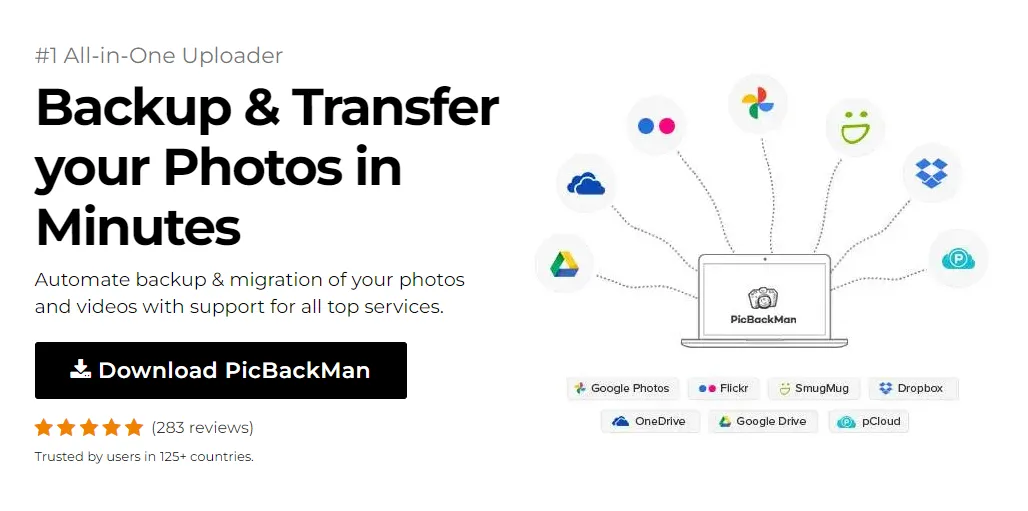
Why is it the #1 bulk uploader?
- Insanely fast!
- Maintains folder structure.
- 100% automated upload.
- Supports RAW files.
- Privacy default.
How can you get started?
Download PicBackMan and start free, then upgrade to annual or lifetime plan as per your needs. Join 100,000+ users who trust PicBackMan for keeping their precious memories safe in multiple online accounts.
“Your pictures are scattered. PicBackMan helps you bring order to your digital memories.”
How to Unsync Photos from MacBook: A Comprehensive Guide


In this digital age, our MacBook serves as a hub for our precious memories, holding countless photos that document our lives. However, there comes a time when you may need to unsync photos from your MacBook for various reasons, such as freeing up storage space or organizing your digital collection. In this detailed guide, we will explore various methods to unsync photos from your MacBook, ensuring you can manage your photo library efficiently.
Understanding the Need to Unsync Photos
Before we delve into the methods of unsyncing photos from your MacBook, it's essential to understand why you might want to do so. Here are a few common scenarios:
-
Storage Space Management: Over time, your photo library can consume a significant amount of storage space on your MacBook. Unsyncing photos can free up valuable storage for other files and applications.
-
Privacy and Security: If you share your MacBook with others or plan to sell it, you might want to remove personal photos to protect your privacy.
-
Organization: To maintain a well-organized photo collection, you may want to unsync and manage your photos systematically.
Now that we've established the need let's explore the various methods to unsync photos from your MacBook.
Method 1: Using iCloud Photo Library
iCloud Photo Library offers an effortless way to store and manage your photos. Here's how you can unsync photos using this service:
-
Open System Preferences: Click on the Apple logo in the top-left corner of your MacBook's screen, then select "System Preferences."
-
Click on Apple ID: In System Preferences, click on "Apple ID," and then select "iCloud."
-
Manage Storage: Under iCloud, click on "Manage" next to "Storage."
-
Select Photos: In the list of apps using iCloud, locate "Photos" and click on it.
-
Disable iCloud Photos: To unsync your photos, simply uncheck the box next to "iCloud Photos."
This will stop syncing your photos to iCloud, and they will no longer be accessible through iCloud on your MacBook.
Method 2: Using iCloud Website
If you prefer to manage your photos through the iCloud website, follow these steps:
-
Open Your Web Browser: Launch your preferred web browser and go to iCloud.com.
-
Sign In: Sign in with your Apple ID and password.
-
Access Photos: Click on the "Photos" icon to access your iCloud Photo Library.
-
Select Photos: Browse through your photos and select the ones you want to unsync.
-
Delete Photos: Click the trash can icon to delete the selected photos. This action will remove them from your iCloud Photo Library and subsequently from your MacBook if it's synced with iCloud.
Backup & Transfer your Photos in Minutes
Trusted by users in 125+ countries.
Method 3: Using Photos App on MacBook
The Photos app on your MacBook offers another convenient method to unsync photos:
-
Open Photos App: Launch the "Photos" app on your MacBook.
-
Select Photos: Click on the photos you want to unsync. You can select multiple photos by holding down the Command key while clicking.
-
Delete Photos: After selecting the photos, right-click and choose "Delete X Photos," with 'X' representing the number of selected photos.
-
Confirm Deletion: Confirm the deletion when prompted. The selected photos will be removed from your MacBook's library.
Method 4: Using External Storage
If you wish to keep your photos but remove them from your MacBook's internal storage, consider using external storage devices like external hard drives or USB flash drives:
-
Connect External Storage: Plug in your external storage device to your MacBook.
-
Transfer Photos: Open the Photos app, select the photos you want to move, and drag them to the external storage device in your Finder.
-
Eject External Storage: After transferring the photos, safely eject the external storage device to complete the process. Your photos are now stored externally, freeing up space on your MacBook.
Method 5: Using Third-Party Apps
Several third-party apps are designed to help you manage your photo library efficiently. Some of these apps offer features for unsyncing photos while retaining them in an organized manner. Research and choose an app that suits your needs, and follow the app-specific instructions to unsync photos.
Method 6: Using macOS Photos Preferences
If you prefer more granular control over your photo syncing settings, you can use macOS Photos Preferences:
-
Open Photos App: Launch the "Photos" app on your MacBook.
-
Go to Preferences: Click "Photos" in the top menu, and then select "Preferences."
-
iCloud Tab: In the Preferences window, go to the "iCloud" tab.
-
Deselect Sync: Uncheck the box next to "Copy items to the Photos library." This will prevent new photos from syncing to your MacBook.
-
Remove Existing Photos: To unsync existing photos, you may need to manually delete them from your MacBook's Photos library.
By following these methods, you can effectively unsync photos from your MacBook, whether you want to remove them entirely or store them externally.
How to Manage Your Photo Library After Unsyncing
Once you have successfully unsynced photos from your MacBook, it's crucial to manage your photo library effectively. Here are some tips to keep your digital memories organized:
-
Create Folders: Organize your photos into folders based on events, dates, or categories. This makes it easier to locate specific photos when needed.
-
Regular Backups: Ensure you have a backup system in place for your photos. You can use external hard drives or cloud storage services like Google Drive or Dropbox to keep your photos safe.
-
Use Tags and Keywords: Assign tags and keywords to your photos for quick searching. Most photo management apps and platforms allow you to add metadata to your photos.
-
Delete Duplicates: Periodically check for duplicate photos and delete them to save space and maintain a clutter-free library.
-
Albums and Collections: Create albums or collections to group related photos together, making it easier to browse and share specific sets of images.
Quick Tip to ensure your videos never go missing
Videos are precious memories and all of us never want to ever lose them to hard disk crashes or missing drives. PicBackMan is the easiest and simplest way to keep your videos safely backed up in one or more online accounts. Simply Download PicBackMan (it's free!), register your account, connect to your online store and tell PicBackMan where your videos are - PicBackMan does the rest, automatically. It bulk uploads all videos and keeps looking for new ones and uploads those too. You don't have to ever touch it.
Frequently Asked Questions (FAQs)
Q: Can I unsync photos from my MacBook without deleting them from iCloud?
A: Yes, you can. By disabling iCloud Photos on your MacBook, you stop the syncing process, but your photos remain stored in your iCloud account. They won't be accessible from your MacBook, but they can be accessed via iCloud.com or other Apple devices connected to the same iCloud account.
Q: What happens to unsynced photos on my MacBook if I delete them from iCloud?
A: If you delete unsynced photos from iCloud, they will be removed from your iCloud Photo Library and any other devices connected to the same iCloud account. Be cautious when deleting photos from iCloud, as this action is irreversible.
Q: Is it possible to recover unsynced photos once they are deleted from my MacBook?
A: If you've deleted photos from your MacBook, you may be able to recover them from your iCloud account if they were previously synced. However, once photos are deleted from iCloud, they may not be recoverable.
Q: Are there any third-party apps that can help me manage my unsynced photos?
A: Yes, there are several third-party apps available for managing photos
on your MacBook. Some popular options include Adobe Lightroom, Google Photos, and Photoscape X. These apps offer various features for organizing, editing, and managing your photo library.
Q: Can I unsync specific albums or folders from my MacBook without affecting others?
A: With iCloud Photos, you cannot unsync specific albums or folders selectively. Disabling iCloud Photos on your MacBook will stop the syncing of all photos and albums associated with your iCloud account.
Q: How do I delete photos permanently from my MacBook after unsyncing them?
A: To permanently delete photos from your MacBook after unsyncing them, you can empty the "Recently Deleted" album in the Photos app. This action will permanently remove the photos from your device.
In conclusion, managing your photo library on your MacBook doesn't have to be a daunting task. By understanding the various methods to unsync photos and implementing effective organization strategies, you can keep your digital memories in order and ensure that your MacBook remains clutter-free and optimized for your other computing needs.






